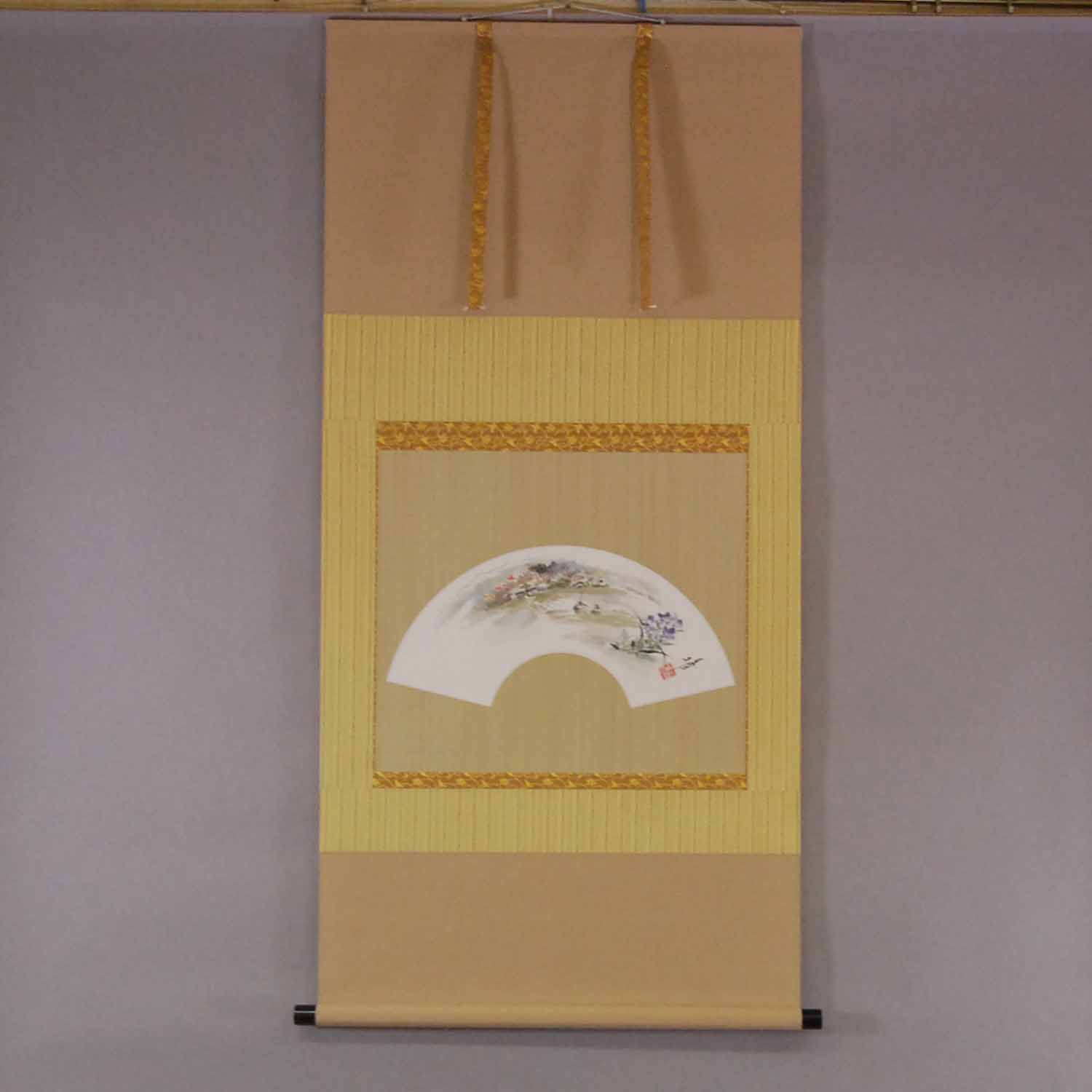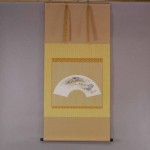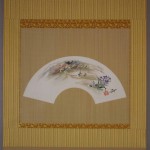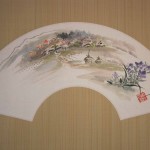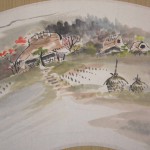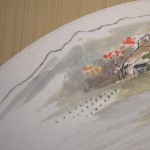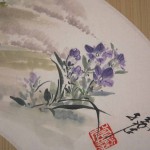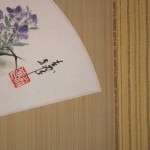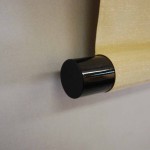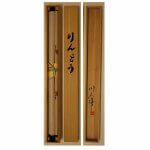Products Lineup
News / Blog
Other Menus
Kakejiku Hanging Scroll: Gentian / Katsunobu Kawahito - Rindou
- Product ID
- 0107
- Name
- Katsunobu Kawahito
- Profile
1922-
A member of the Nitten Exhibition- Size
- 725mm x 1420mm
- Roller End Material
Wood coated with black "urushi" (lacquer)- Material of the Work
- Japanese paper
- Price
- JPY 150,000
- Stock Condition
- In stock
- Payment: Click the Paypal Mark
- Duty and Taxes
Import duty and taxes are beyond our control and may apply to your shipment. Please noted that these fees are the responsibility of the buyer.
- Description
A “Sensu” or “Ougi” (folding fan) is an implement used to move air by hand like “Uchiwa” (fans). The frame consists of several dozen wooden strips, tied together with thread at their ends (referred to as pivots or “kaname”) and when used, a Sensu or Ougi is unfolded and waved back and forth to create a cooling airflow. The angle of a Sensu or Ougi forms when unfolded varies from 90 – 180 degrees, with around 120 degrees being the norm. The shape of the unfolded fan is called “Ougigata or Senkei” and is used as a term in geometry. The shape of a fan spreading toward a tip is thought to imply a prosperous future. Therefore, it makes a nice gift on special or happy occasions.
The fan surface is the part which creates a small airflow by waving back and forth. It also serves to prevent the rib frame from unfolding completely. The surface of a traditional type Sensu has “Washi” (Japanese paper), while other types of Sensu use synthetics or cloth glued to the ribs. From the need for painting on a curved area, fan painting progressed to drawing pictures on a curved shape (ougigata- or senkei-shaped place). This was developed and is known as a Japanese painting style. People who contributed to developing this style of painting are believed to be Soutatsu TAWARAYA and Kourin OGATA. (They were great masters of a Japanese-style painting in the Edo period.)
Katsunobu Kawahito often painted on a fan-shaped screen, even though it is more difficult than we can imagine to make a composition on a curved screen. All the elements in this well-ordered yet simple composition – the mountains in the background, the private house in the midground, the gentian in the foreground, and the unpainted blank space – harmonize with each other at a high level to create a sense of the autumn season. This work, which makes us feel the autumn atmosphere, is great.

